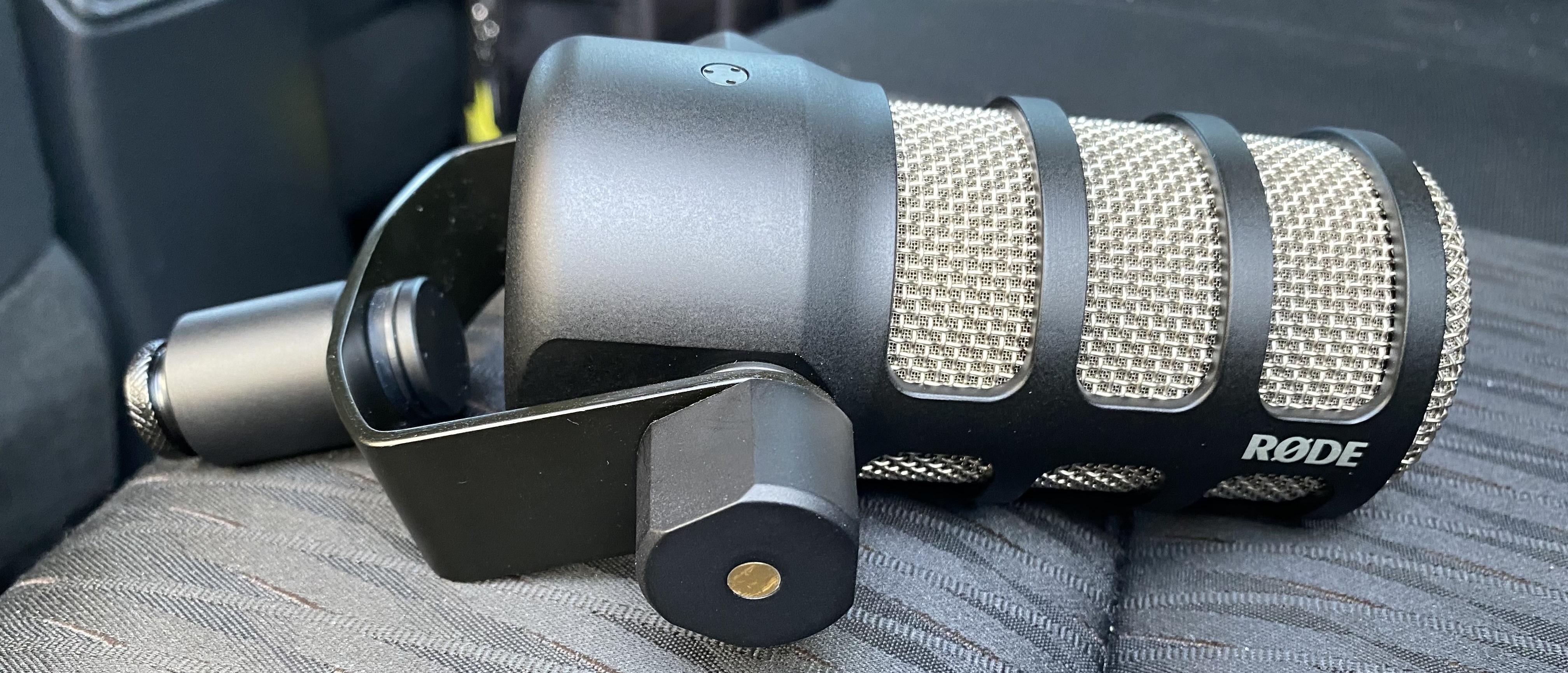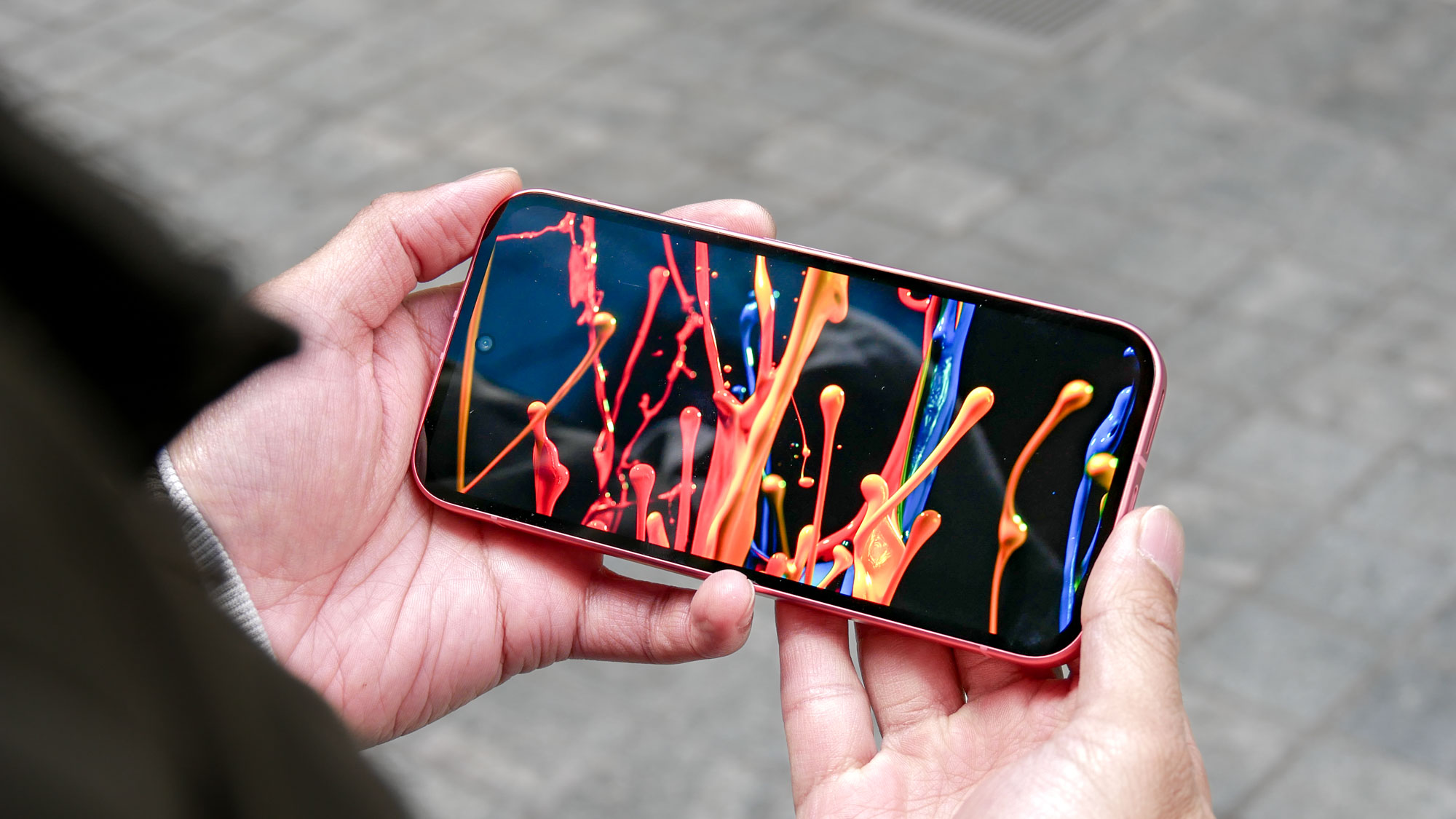Tom's Guide Verdict
For $99, you can’t find a better USB microphone than the Rode PodMic. It’s a small, sturdy and intimate mic that brings studio-level professionalism to your podcast.
Pros
- +
Affordable
- +
Internal pop filter
- +
Great sound
- +
Professional build quality and looks
Cons
- -
Stand sold separately
- -
XLR interface not ideal for beginners
Why you can trust Tom's Guide
This Rode Podmic review must start, if I may, with an anecdote. Before I became a podcaster, I was a radio host at a local station. As a matter of fact, my love for radio inspired me to transition the show to a podcast amidst a dramatic career change.
Connection: 3-pin XLR
Ports: XLR out
Condensers: Not stated
Directional patterns: Cardioid
Size: 6.8 x 4.3 x 2.4 inches
Weight: 33.1 ounces
You’re probably wondering — what does that have to do with a small desktop microphone? Well, after using plug-and-play mics for most of my podcasting career, the PodMic was a welcome return back to smooth-sounding (and sultry-looking) mics with XLR cords and soundboards. It’s no plug-and-play USB model, then, but the PodMic is one of both the best microphones and the best podcasting microphones you can buy today.
- The best headphones with a mic for voice and video calls
- Our picks of the best computer speakers
Rode PodMic review: Price and availability
- $99, though no stand included
- Available at range of retailers
The Rode PodMic is available for $99, an absolute steal for such a high-quality mic and just the right price point for beginners. With that said, if you are looking to set up multiple mics, you can’t beat $99 a pop for each setup — though a stand isn't included in the box, so put aside another $20-30 per mic.
Amazon, Walmart, Best Buy and Focus all stock the PodMic, though Focus currently has it at a slight bump up to $109.
Rode PodMic review: Design
- Small yet robust build
- Uses XLR rather than USB, so better for experienced users
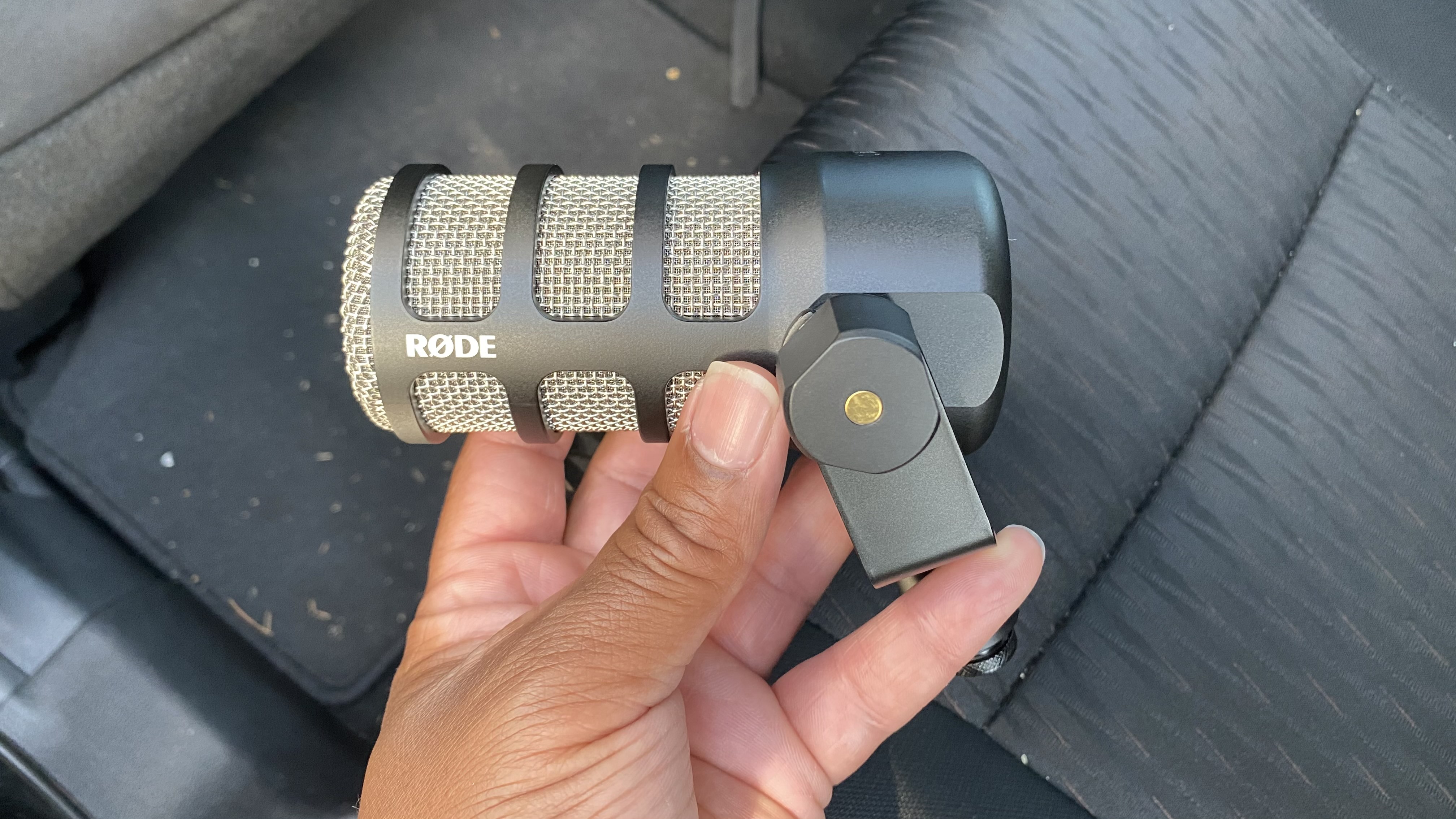
When I opened the PodMic box, it brought back pleasant memories of my time on radio. There’s something iconic about a stocky studio mic with a chrome and/or metal finish. It’s like laying out a sports jersey before game day — it just gets you in the mood to perform.
With its all-metal design and finish, this particular mic looks good, and is sturdy for its size. It comes with an XLR cord, which gave me plenty of room to move the mic away from the soundboard — though beginners beware, you won’t be able to simply plug it into your PC’s USB ports. A Blue Yeti or JLab Talk this is not; Rode also has a $99 USB mic of its own, the Rode NT-USB Mini.
The only other drawback that I noticed was the swinging bracket that hovered below the XLR port, which doesn’t allow for a free swinging bracket. It’s only a minor inconvenience, and I didn’t notice it once I started to record.
The mic does require a stand or boom arm, and I chose the $29 Rode DS1. This stand is easy to put together, relatively small and doesn’t take up too much space. From there, it was time to record.
Rode PodMic review: Sound quality
- High recording quality with integrated pop filter
- Doesn't need complex setup for great sound
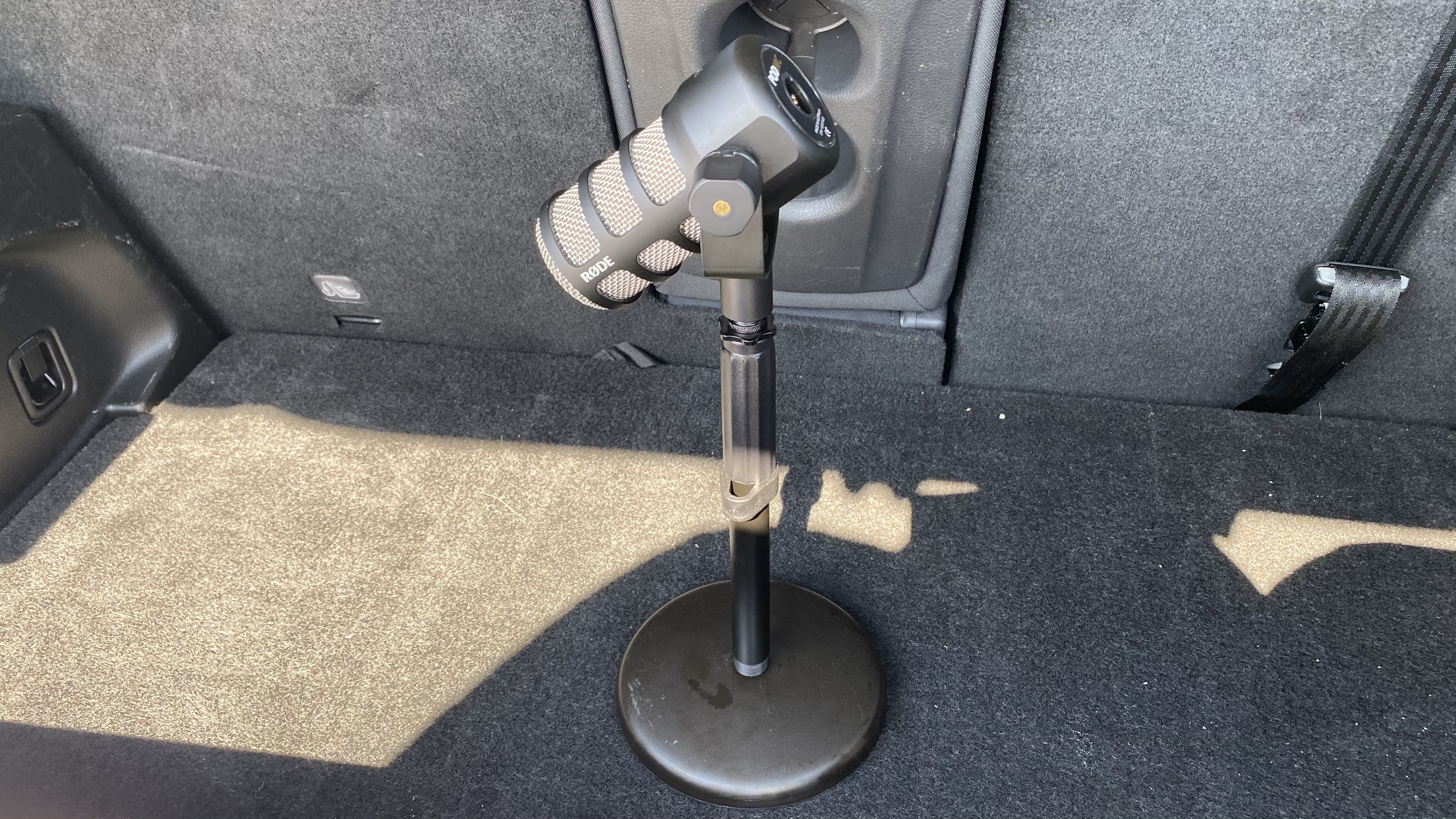
Putting it mildly, this the Rode PodMic is the real deal. Part of the features advertised with the PodMic are its “broadcast-quality dynamic capsule” and “internal pop filter to (minimize) plosive,” along with the mic’s specific dedication to “speech applications.” As someone who has done podcasting for over five years, I was thoroughly impressed with the sound and range of the PodMic.
I recently recorded a podcast with a couple of friends using a couple of PodMics. I erroneously left on the noise gate for both of our mics, which was significant because of my friends’ distance from their mics, as well as a neighbor who was cutting his grass. However, erven with the noise gate and surrounding annoyances, the mic picked up my voice perfectly, with no background static.
While I was about a foot away from my mic, my friends were a bit more distant. One of my friends, who was about 3-4 feet away from the mic, still sounded great on the mic. The other friend, who was about 10 feet away, had his voice go in and out because of the noise gate.
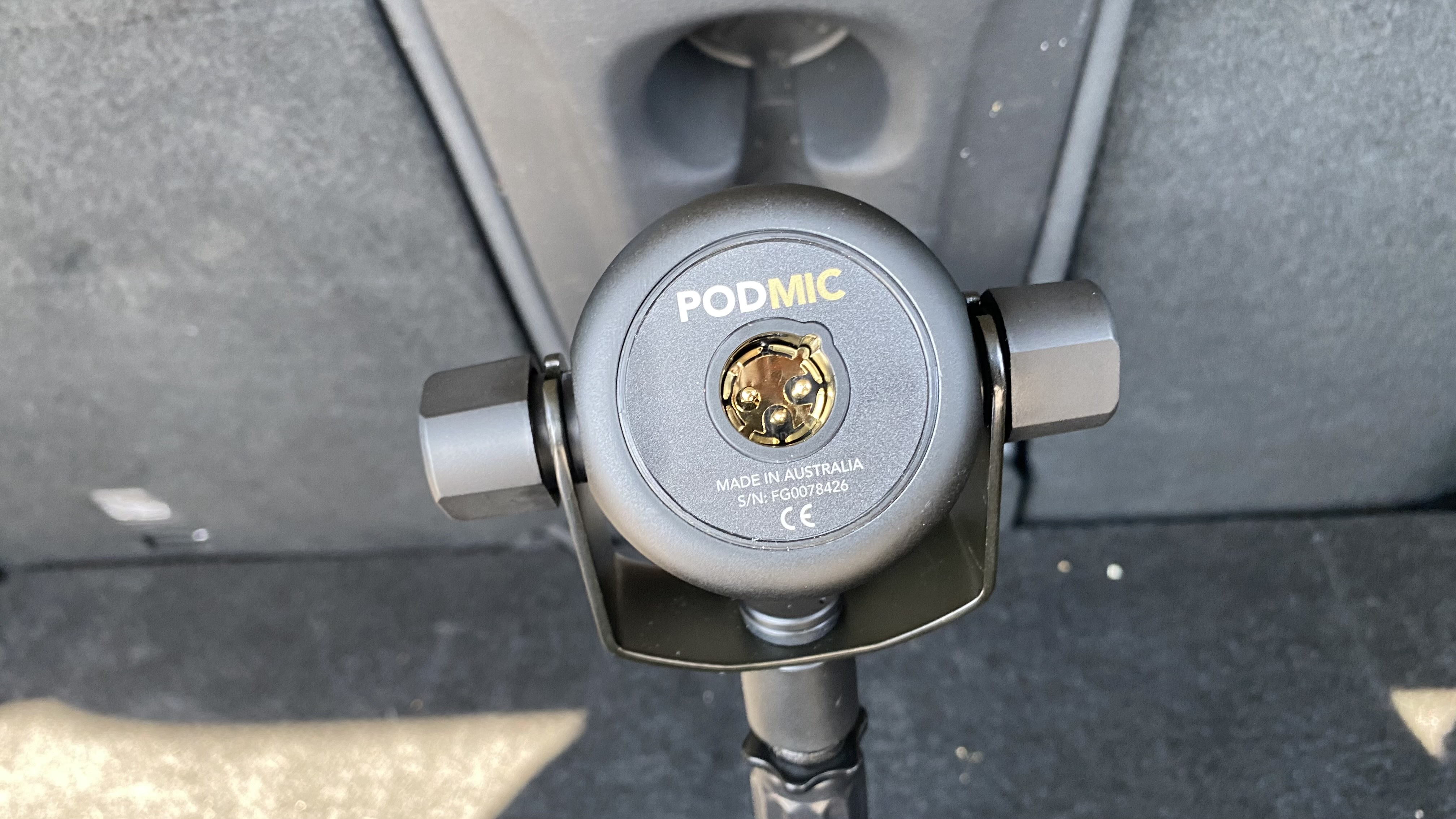
Here’s why that’s significant: Even while fumbling around with the initial setup, the mics still sounded great. That’s the type of coverage a beginner (and even an experienced podcaster like myself) looks for in a product, despite the more pro-minded XLR connection.
The final sound, particularly with my input, came in clear and didn’t need any editing for pops and such. With that said, I can and will always recommend that users invest in a pop filter or windshield for their mic(s). The goal of any successful recording is to minimize issues that might cause problems during the production stage.
As always, my mics are kid-tested — both for sound and strength. My 3-year-old spoke boldly into the PodMic during a recent test, and was quite handsy with the mic as well. Again, between the PodMic and DS1 stand, there wasn’t too much risk of the mic becoming dislodged, or even the entire set falling to the floor.
Rode PodMic review: Verdict
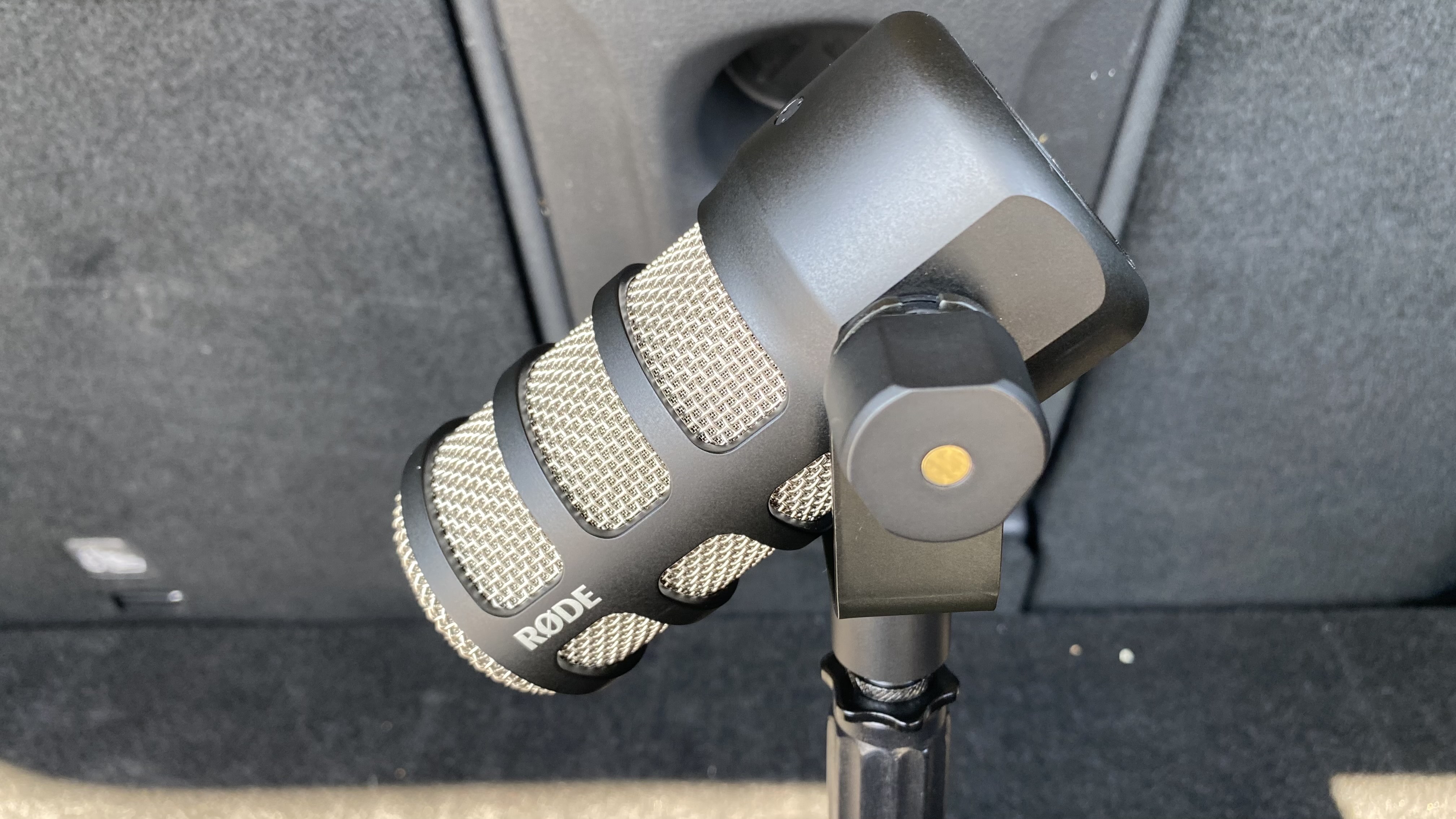
The Rode PodMic has a strong reputation among regular podcasters, and it’s easy to see why. The only minor issue I had with this mic was the XLR connection getting in the way of the swinging bracket, but that’s nothing compared to the great sound, style and stoutness of the PodMic.
At $99, this mic will give you a lot of bang for your buck — and thanks to the internal pop filter, you might not even hear it.
- More: We've tested the best Bluetooth speakers
Ken J. Makin is a tech and entertainment writer for Tom’s Guide, and has nearly 20 years of experience as a journalist. He’s an avid podcaster and freelancer for various sites, including ESPN’s The Undefeated and The Christian Science Monitor. When he’s not podding or writing, Ken is likely spending time with his wife and children.
